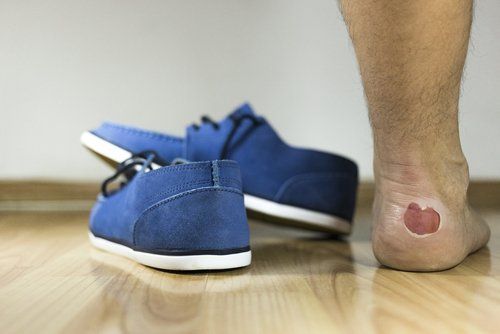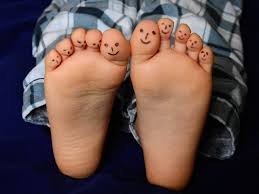What are blisters and what causes them?
Blisters are painful, fluid-filled lesions produced by friction and pressure. They can be caused by the following:
- Ill-fitting footwear
- Stiff shoes
- Wrinkled socks against the skin
- Excessive moisture
- Foot deformities.
Are they serious?
Blisters can become a more serious concern if you have diabetes and they may not heal so easily. Please see your podiatrist for further advice.
What are the treatments?
It is important to act immediately if you feel any friction or discomfort as blisters can form very quickly. Stop walking or running and examine your feet and if nothing has developed, consider applying some material or padding to cushion the area or even a breathable waterproof plaster.
If a blister does occur, do not pop it. Cut a hole in a piece foam or felt to form a doughnut over the blister. Tape the foam or felt in place or cover with a soft gel-type dressing. Treat an open blister with mild soap and water, cover it with an antiseptic ointment and a protective soft gel dressing to prevent infection and speed up the healing process.
Most foot blisters last between three and seven days and will normally clear up if further excessive friction is avoided.
How can I prevent them?
As blisters are the result of friction, there are a number of simple techniques that can prevent your walking, running or social activity being ruined by a blister:
- Keep your feet dry and your toenails trimmed
- Always wear socks of the right size as a cushion between your feet and footwear and change your socks daily
- Wear comfortable, good-fitting footwear, especially on long walks or runs
- For very sweaty feet, use products that help control excessive moisture
- Immediately remove any foreign bodies that accumulate in socks and boots
- Ensure the tongue and laces of your boots are arranged correctly and evenly
- Check your feet regularly for any sign of rubbing and tenderness.
It is possible to buy socks made of fibres with good ‘wicking’ properties and also special ‘dual layer’ socks where the inner layer moves with the foot, and the outer layer with the shoe – eliminating friction at the skin surface.
When should I see a podiatrist?
If you experience any foot care issues which do not resolve themselves naturally or through routine foot care within three weeks, it is recommended to seek the help of a healthcare professional.
To talk to a podiatrist (also known as a chiropodist) about the options available regarding treatment, you can contact an NHS podiatrist or a private practice podiatrist. In both cases, always ensure that any practitioners you visit are registered with the Health and Care Professionals Council (HCPC) and describe themselves as a podiatrist (or chiropodist).
To contact an NHS podiatrist, please contact your GP practice for information on an NHS referral (in some areas you can self-refer).
To see a private practice podiatrist, use our search Find A Podiatrist . https://www.betafeetpodiatry.co.uk/





